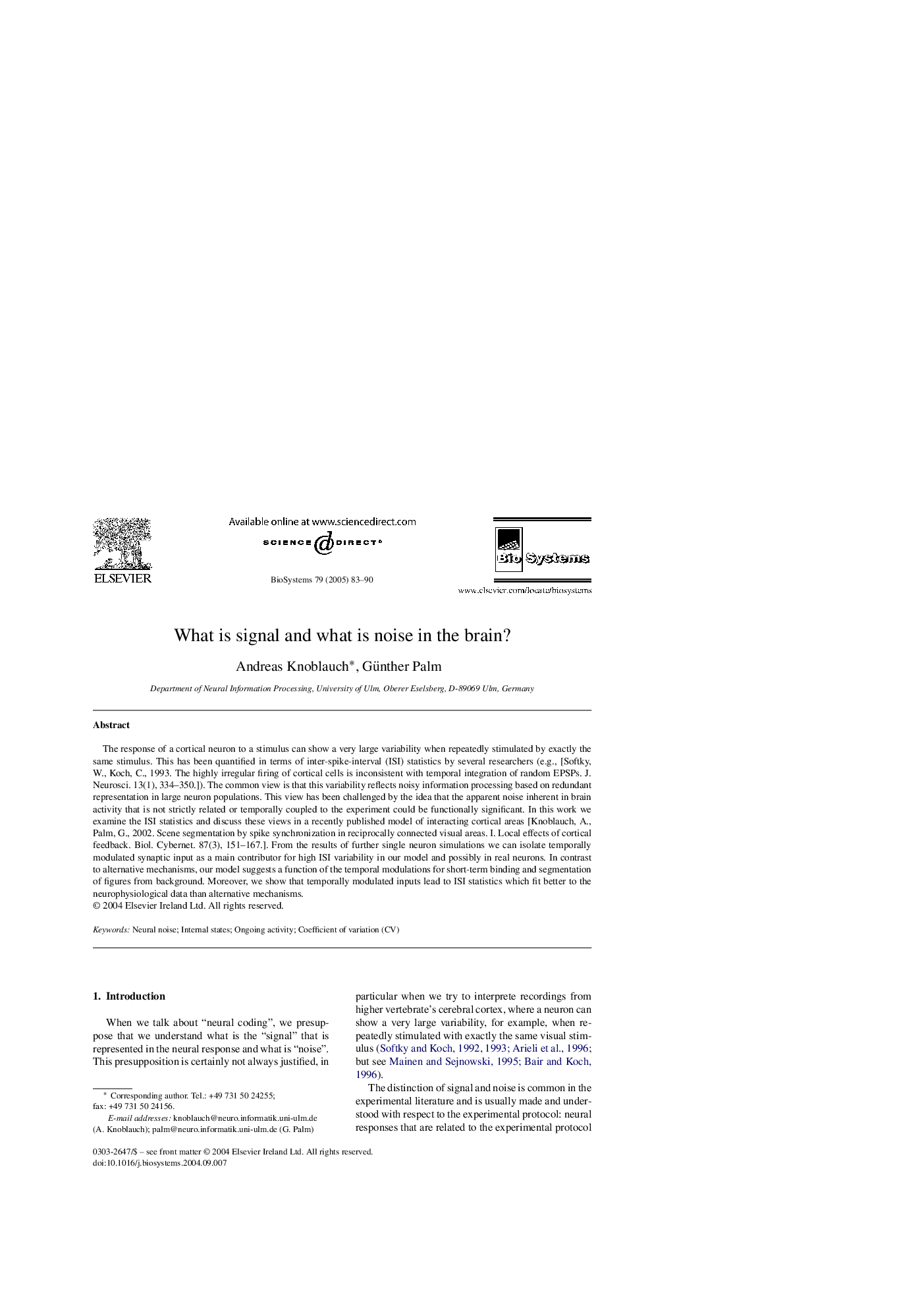| Article ID | Journal | Published Year | Pages | File Type |
|---|---|---|---|---|
| 9900955 | Biosystems | 2005 | 8 Pages |
Abstract
The response of a cortical neuron to a stimulus can show a very large variability when repeatedly stimulated by exactly the same stimulus. This has been quantified in terms of inter-spike-interval (ISI) statistics by several researchers (e.g., [Softky, W., Koch, C., 1993. The highly irregular firing of cortical cells is inconsistent with temporal integration of random EPSPs. J. Neurosci. 13(1), 334-350.]). The common view is that this variability reflects noisy information processing based on redundant representation in large neuron populations. This view has been challanged by the idea that the apparent noise inherent in brain activity that is not strictly related or temporally coupled to the experiment could be functionally significant. In this work we examine the ISI statistics and discuss these views in a recently published model of interacting cortical areas [Knoblauch, A., Palm, G., 2002. Scene segmentation by spike synchronization in reciprocally connected visual areas. I. Local effects of cortical feedback. Biol. Cybernet. 87(3), 151-167.]. From the results of further single neuron simulations we can isolate temporally modulated synaptic input as a main contributor for high ISI variability in our model and possibly in real neurons. In contrast to alternative mechanisms, our model suggests a function of the temporal modulations for short-term binding and segmentation of figures from background. Moreover, we show that temporally modulated inputs lead to ISI statistics which fit better to the neurophysiological data than alternative mechanisms.
Related Topics
Physical Sciences and Engineering
Mathematics
Modelling and Simulation
Authors
Andreas Knoblauch, Günther Palm,
